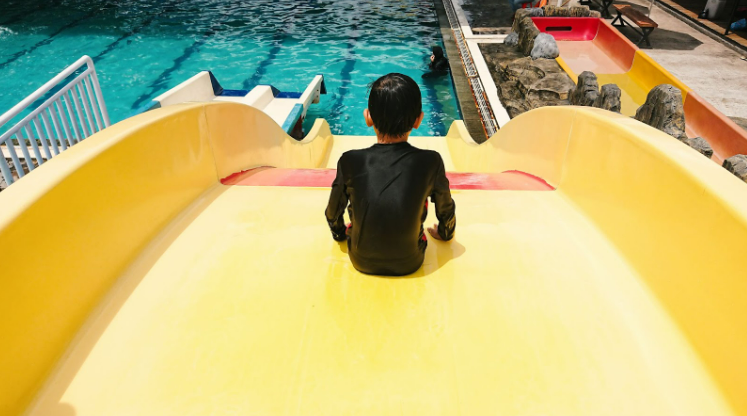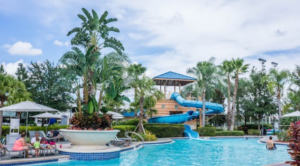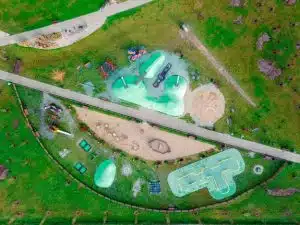In the vibrant tapestry of recreational spaces, few endeavors weave together the threads of fun, relaxation, and sensory delight as harmoniously as an aquatic playground. One is high-quality equipment for the aquatic arena by splash pad suppliers. Picture a sun-kissed haven where the allure of sparkling waters meets children’s laughter at play, where families gather to escape the daily bustle and immerse themselves in a world of aquatic wonder. Yet, creating such a captivating aquatic haven is an intricate and nuanced art, requiring a meticulous fusion of safety protocols, innovative design principles, inclusivity, sustainability practices, and an astute grasp of the multifaceted desires and aspirations of those seeking refuge in its watery embrace. Nowthen, we embark on a journey of exploration into the very heart of what transforms a mere aquatic facility into an extraordinary playground of excellence.
What is at the core of an Aquatic Playground?
Beyond the mere installation of water features, this realm of aquatic playgrounds transcends conventional expectations. It stands as a testament to the pursuit of perfection, where each element meticulously chosen and thoughtfully placed contributes to a symphony of experiences that resonate with people of all ages. At its core lies an unwavering commitment to the safety and well-being of every visitor who steps onto its shores. Here, lifeguard stations stand as vigilant sentinels, ensuring every splash and every laugh transpires within secure waters. These playgrounds adhere to the strictest water quality management standards, employing cutting-edge filtration systems and regular testing to guarantee a pristine and hygienic aquatic environment. And keeping in mind that high-quality equipment for aquatic playgrounds is an absolute must.
Yet, aquatic playground excellence extends far beyond the boundaries of safety. It is an ode to creativity and imagination, where every water feature is meticulously designed to engage, surprise, and captivate. Picture a landscape adorned with an array of interactive structures—sprayers that dance with whimsical abandon, geysers that erupt in joyful bursts, and cascading waterfalls that beckon young and old alike to bask in their refreshing embrace. Slides and chutes, ingeniously designed with age-appropriateness in mind, spiral, and curve, offering exhilarating descents and jubilant splashes where the splash pad suppliers ensure high quality, providing moments of sheer elation that etch themselves into the tapestry of cherished memories.
Who uses the Aquatic Playground?
However, the symphony of aquatic playground excellence is not confined solely to the vitality of the young. It extends its welcoming arms to visitors of all ages, recognizing that the joy of aquatic play knows no boundaries. As the sun sprays its golden glow upon the water, adults and teens find their sanctuary, navigating gentle currents and partaking in leisurely pursuits. The playground becomes a canvas of connection, where families bond, friendships flourish, and strangers become companions as they revel in the shared delight of water’s embrace.
While rooted in entertainment, this quest for excellence is intrinsically tied to a more profound ethos of inclusivity and sustainability. Accessible pathways and features beckon individuals of all abilities, ensuring every visitor can partake in the aquatic magic. Native plants and thoughtfully curated landscaping harmonize with the environment, imparting a sense of balance and ecological stewardship to the playground’s essence, alongside high-quality equipment for aquatic playgrounds.
What is required to make an Aquatic Playground?
Creating a high-quality aquatic playground requires careful planning, design, and attention to various elements that ensure safety, entertainment, and engagement for visitors of all ages. Here are the explicit details of the requirements for a top-notch aquatic playground:
- Safety Standards and Regulations:
- Certification and Compliance: The aquatic playground must adhere to local, state, and national safety regulations, including those set by organizations such as the Consumer Product Safety Commission (CPSC) and the American Society for Testing and Materials (ASTM). Proper certification and compliance ensure a secure environment for visitors.
- Diverse Water Features:
- Interactive Structures: A high-quality aquatic playground should feature a variety of interactive water elements such as water sprayers, geysers, dumping buckets, water cannons, and fountains. These features engage visitors and provide opportunities for play and imaginative exploration.
- Slides and Chutes: Incorporating age-appropriate slides and chutes with gentle slopes and adequate splash zones ensures enjoyable sliding experiences for different age groups.
- Age-Appropriate Zones:
- Separate Play Areas: Designated zones for different age groups (toddlers, children, and teens/adults) ensure that activities are safe and suitable for each age range. Features like shallow wading pools, gentle sprays, and miniature slides cater to toddlers, while more adventurous structures and deeper areas can accommodate older visitors.
- Non-Slip Surfaces and Flooring:
- Safety Surfacing: Utilize slip-resistant materials, such as textured rubber or specialized non-slip coatings, to ensure secure footing and prevent accidents on wet surfaces.
- Proper Water Filtration and Treatment:
- Hygiene and Water Quality: A high-quality aquatic playground must prioritize water safety and cleanliness. Incorporate advanced filtration systems, UV or ozone treatment, and regular water testing to maintain safe and sanitary water conditions.
- Accessibility and Inclusivity:
- ADA Compliance: The playground should be designed with accessibility in mind, incorporating ramps, handrails, and zero-depth entry areas to accommodate visitors with mobility challenges.
- Inclusive Features: Install inclusive features like sensory play elements, wide pathways, and quieter areas for visitors with sensory sensitivities.
- Shade and Seating:
- Shaded Areas: Provide ample shady spots with structures like umbrellas, canopies, or pergolas to protect visitors from sun exposure and offer a comfortable space for rest.
- Seating Options: Include seating areas with benches, lounge chairs, and picnic tables for families and groups to rest, eat, and observe.
- Landscaping and Aesthetics:
- Themed Design: Create an immersive experience by incorporating themed elements, such as nautical or jungle themes, through creative landscaping, sculptures, and artistic features.
- Native Plants: Integrate local and native plants that require minimal water and maintenance, enhancing the natural ambiance and minimizing environmental impact.
- Staff Training and Lifeguard Services:
- Trained Personnel: Employ well-trained staff, including lifeguards, to monitor the aquatic playground, enforce safety rules, and provide assistance when needed.
- Maintenance and Sustainability:
- Regular Maintenance: Establish a routine maintenance schedule to ensure all equipment is in optimal condition and hazards-free. Regular cleaning and repairs maintain the playground’s quality.
- Water Conservation: Incorporate water-saving technologies, such as recirculation systems, to minimize water consumption and promote sustainability.
- Engaging Amenities:
- Concession Areas: Include snack bars or food stands to provide visitors with convenient dining options.
- Retail Spaces: Consider including a retail area for swimwear, sunscreen, and aquatic accessories.
- Effective Signage and Information:
- Safety Signage: Install clear and concise signage indicating water depths, rules, emergency contact information, and safety guidelines.
- Educational Boards: Display informative panels that teach visitors about water safety, sun protection, and conservation.






